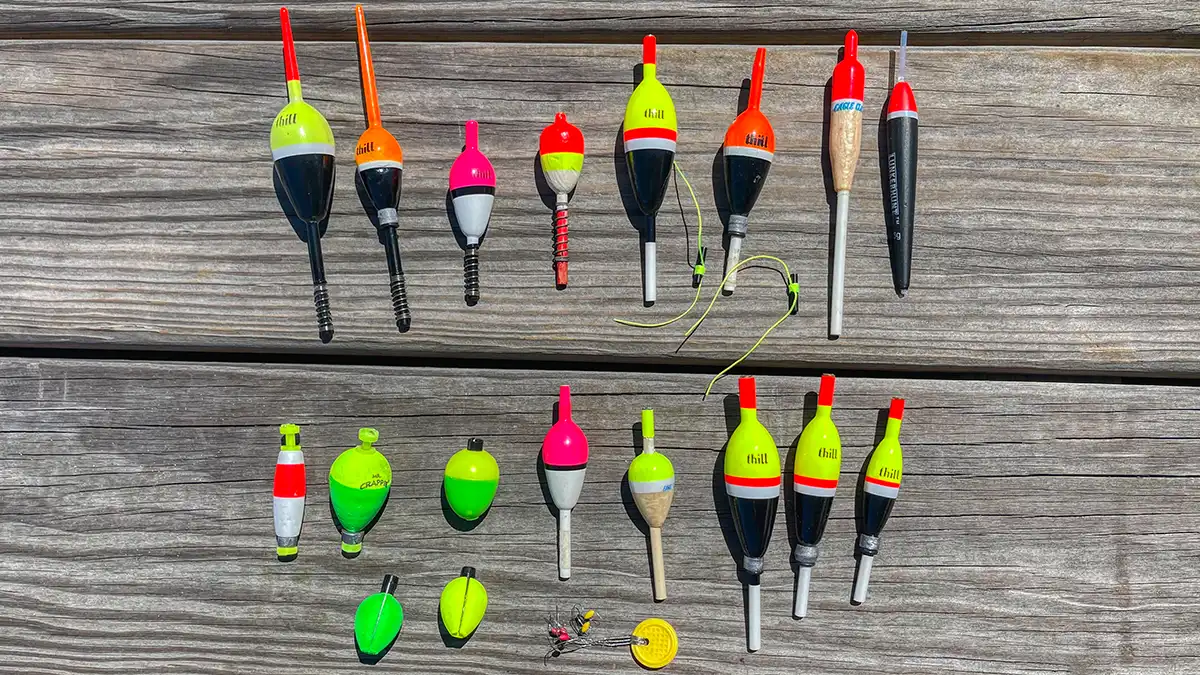
Best Trout Bobbers: Choosing the Right Floats for Trout Fishing
Bobber fishing for trout is one of the most effective and enjoyable ways to catch these elusive fish. Using the right bobber can make a significant difference in your success, as it determines how naturally your bait presents itself and how easily you detect bites. In this guide, we’ll break down the best trout bobbers, the different types available, and how to use them effectively in various fishing situations (how to float fish for trout).
Why Bobbers Matter for Trout Fishing
Trout Bobbers, also known as fishing floats, serve several key purposes in trout fishing:
- Suspending Bait: Keeping bait at the desired depth where trout are feeding.
- Detecting Bites: Moving or dipping when a trout takes the bait.
- Casting Assistance: Adding weight to lightweight bait setups, allowing for longer casts.
- Keeping Bait in Strike Zones: Preventing bait from sinking too deep or drifting too quickly.
Choosing the right bobber depends on the fishing conditions, the type of water you’re fishing in, and the technique you’re using.
Types of Trout Bobbers
1. Pencil-Shaped Bobbers
- Best For: Slow-moving water, lakes, and finesse fishing.
- Why They Work: These slim, elongated bobbers are highly sensitive and require very little force to be pulled under, making them excellent for detecting light bites from trout.
- Recommended Products:
- E-Z Trout Floats (lightweight and highly sensitive)
- Trout Magnet E-Z Floats
2. Round or Ball Bobbers
- Best For: Shallow streams, fast-moving water.
- Why They Work: Traditional round bobbers are highly visible and easy to cast but are less sensitive than pencil bobbers. They work best when fishing in areas where trout are aggressively feeding.
- Recommended Products:
- Eagle Claw Snap-On Floats
- Thill Classic Round Bobber
3. Slip Bobbers
- Best For: Deep water fishing, lakes, reservoirs.
- Why They Work: Slip bobbers are another type of trout bobber that allows you to adjust your bait’s depth by sliding up and down the line. They are excellent for targeting trout at different water column levels.
- Recommended Products:
- Thill Pro Series Slip Float
- Lindy Premium Slip Bobber
4. Clear Water Weighted Floats
- Best For: Clear water where trout may be spooked by traditional bobbers.
- Why They Work: These floats are nearly invisible underwater, reducing the chances of spooking wary trout.
- Recommended Products:
- ES Lures Clear Float
- RAINBOW Clear Drift Floats
5. Foam Strike Indicators
- Best For: Fly fishing and ultra-light setups.
- Why They Work: These small foam indicators are perfect for detecting subtle bites when fishing with flies or small natural baits.
- Recommended Products:
- Trout Strike Indicators Foam
- Orvis Foam Strike Indicators
Slip Bobbers vs. Static Bobbers: Which One is Better?
Both slip bobbers and static bobbers have their place in trout fishing. Here’s how to choose the right one for your situation:
Slip Bobbers
- Pros:
- Adjustable depth allows for precise bait placement.
- Ideal for deeper water fishing.
- Reduces resistance when a trout bites.
- Cons:
- Slightly more complex to rig than static bobbers.
- Can be harder to use in very shallow water.
Static Bobbers (Fixed Bobbers)
- Pros:
- Easier to rig and use, making them ideal for beginners.
- Great for shallow water and small streams.
- More visible and easier to control in fast-moving water.
- Cons:
- Limited depth control.
- Can be affected by wind and current.
For most trout anglers, having both types available is the best approach. Slip bobbers work well in lakes and deep pools, while static bobbers excel in streams and shallow rivers.
Best Trout Bobbers and Fishing Setups
1. Bobber and Worm Setup (Beginner-Friendly)
- Best For: Stocked trout, shallow streams.
- How to Rig:
- Attach a round bobber about 2-3 feet above a small hook.
- Use a live worm or PowerBait on the hook.
- Cast near structures or along current seams.
2. Slip Bobber and Minnow Setup
- Best For: Large wild trout, deep lakes.
- How to Rig:
- Thread a slip bobber onto the line, followed by a bobber stop.
- Attach a small split shot weight and a size 6-10 hook.
- Hook a live minnow through the lips and let it drift naturally.
3. Pencil Bobber and Fly Setup
- Best For: Clear water, fly fishing without a fly rod.
- How to Rig:
- Use a clear water weighted float or a pencil bobber.
- Attach a small wet fly or nymph about 18 inches below the bobber.
- Slowly twitch the bobber to imitate a swimming insect.
4. Jig and Slip Bobber Setup
- Best For: Deeper lakes, aggressive trout.
- How to Rig:
- Use a slip bobber with a 1/16 to 1/8 oz jig head.
- Tip the jig with a soft plastic or minnow.
- Allow the jig to move naturally with the current.
Best Conditions for Bobber Fishing for Trout
- Morning and Evening: Trout are more active in low-light conditions.
- Overcast Days: Reduced sunlight makes trout less cautious.
- Gentle Currents: Bobbers work best in slow to moderate current speeds.
- Spring and Fall: Trout are closer to shore and more likely to take bait presented under a bobber.
Final Thoughts
Selecting the best trout fishing bobber depends on the water conditions, depth, and fishing technique. Pencil bobbers and clear floats work well in finesse situations, while round bobbers and slip bobbers offer versatility in deeper or moving waters. By understanding how each type of bobber functions, you can improve your trout fishing success and enjoy more productive days on the water.
Whether you’re a beginner using a simple worm-and-bobber setup or an experienced angler employing slip bobbers for deep trout, the right float can make all the difference. Happy fishing!
